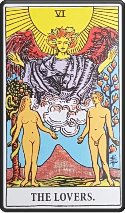
When we are with people whom we love and trust, it releases oxytocin, the feel-good hormone, and nature’s medicine for bonding relationships.
As human beings, our brains are hard-wired to live within groups. Being excluded or banished from the tribe could put us in perilous danger, so creating strong bonds is essential for our survival.
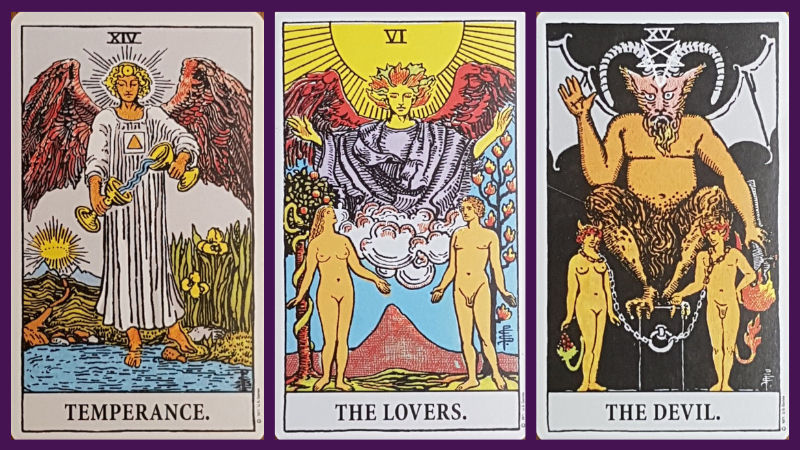
When The Lovers Tarot card shows up, it mainly points to relationships. It is usually the surrounding cards that add clarification. For example, The Lovers and The Devil warns of dysfunctional patterns and unhealthy attachments. In contrast, The Lovers with Temperance suggests compromise, patience, and healing bonds. Alternatively, when placed with the Ten of Pentacles, we can delve into our lineage and understand how our ancestors are intrinsically linked to us, shaping our characteristics and behaviours.
Building strong relationships is about learning to dance in sync with others. For some, it can feel like a Tango/Waltz mash-up. As with any dancing duo, we must first become aware of ourselves and what we bring to the relationship as individuals. Your needs and expectations must be clear before you can synchronise well with others. The three most important factors regarding healthy relationships are communication, comprehension, and compassion.

Let’s look at some other important factors…
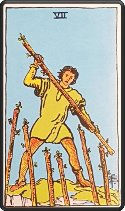
Healthy Boundaries
Every relationship requires healthy boundaries to maintain optimal mental health and overall well-being. It promotes independence and avoids co-dependency. When we place boundaries, we take responsibility for ourselves and achieve a sense of empowerment. Without healthy boundaries, we are open to manipulation and coercion, and that makes for a toxic situation that leads to poor mental health. It is also important not to be too rigid or walled up, as this will affect intimacy. Flexibility and good communication are key here!
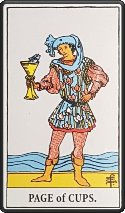
Vulnerability
Vulnerability is a key component when considering a thriving relationship. Without it, the relationship can suffer and stagnate. Being vulnerable allows for genuine empathy and intimacy that deepens bonds and encourages healthy communication, comprehension and clarity. It is natural to feel guarded about our emotions, thoughts, and feelings, but when we open up to our loved ones and dare to be seen, it offers trust in the other person. We all have flaws, and it is those imperfections that unite us.
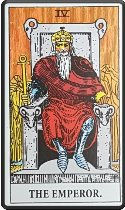
Respect
Respect should be one of the non-negotiables. Disrespect can lead to anger and resentment that gets caught in a constant loop. When we hold our partners in contempt, it severs the spiritual connection and leads to serious dysfunction. We may not always agree with others, but we should be respectful of their thoughts, beliefs, and values if we want to maintain healthy relationships. Showing respect means you care about another’s well-being. You listen to their needs, honour their boundaries, and speak well of them in their absence. Always be respectful and expect it in return.

Honesty
Psychologist Jordon Peterson said, “Be honest, or at least don’t lie.” Honesty comes naturally when respect is upheld. It creates authentic connections and builds trust. It doesn’t mean we should blurt out hurtful comments, there must be diplomacy. But no relationship can endure dishonesty and sustain happy results.
Attachment types
According to psychiatrist John Bowlby, a child’s bond with their parents/caregivers impacts their adult social interactions and relationships with others.
If you struggle with repeated unhealthy dynamics, by attracting dysfunctional relationships, with issues like jealousy, co-dependency, clinginess, or stonewalling, then this may help unlock the answers to your relationship issues. Understanding our attachment style can help us appreciate each other and work towards making changes to bring harmony to our relationships. There are four attachment types:
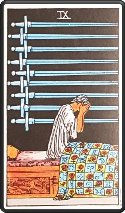
Anxious
Anxious types usually have low self-esteem and often put others above themselves. They can be clingy and often preoccupied with satisfying the needs of others while seeking perfection within themselves to avoid being a disappointment. There is a deep-seated fear of abandonment that drives this behaviour. They’ll often place a higher value towards others' needs and feelings to appease their anxiety over being unworthy or discarded.
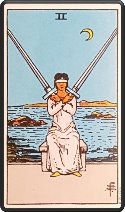
Avoidant
Avoidant types tend to be self-sufficient and don’t like to rely on others. Likewise, they don’t like people being clingy or demanding their attention. They can be emotionally detached and easily switch off when faced with relationship problems. There may be issues around intimacy and vulnerability as these types like to keep people at a distance to protect their privacy.
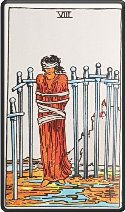
Disorganised
Disorganised types tend to swing between both Anxious and Avoidant types which involve ambiguous behaviour patterns. They want closeness and intimacy, but it creates fear and anxiety simultaneously, so they pull away to avoid getting hurt.
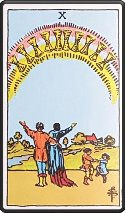
Secure
Secure Attachment types are comfortable in themselves. They do not rely on a partner to rescue them or regulate their emotions. They have a healthy self-image and don’t need validation or approval. These types are considerate of other’s needs and feelings, offering compassion and restoring balance to the relationship.
These attachment types are not set in stone. Trauma can manifest in many ways, but it can also be healed!
Where do you struggle in relationships? Is it trust? Fear of abandonment? Or maybe fear of commitment? When The Lovers Tarot card shows up, it’s time to dive deep into who you are to the core. What are your values and beliefs? Do you value yourself? Are you prepared to make changes? Once you learn the dance steps that represent who you are individually, you will then learn how to dance well with others and teach them too!

Commentaires